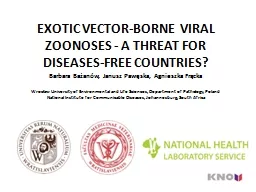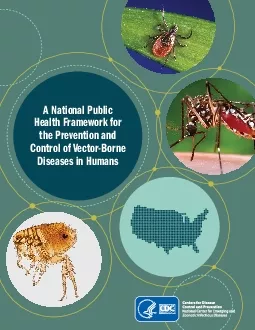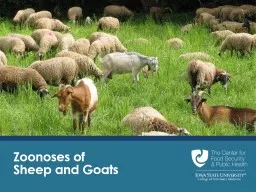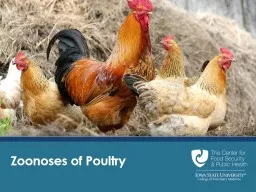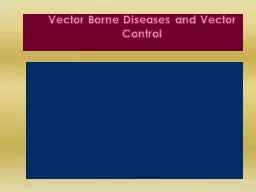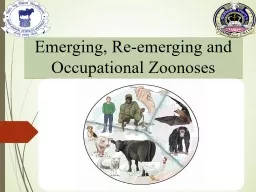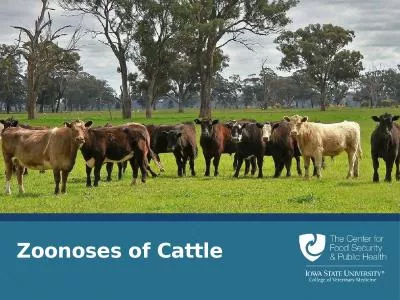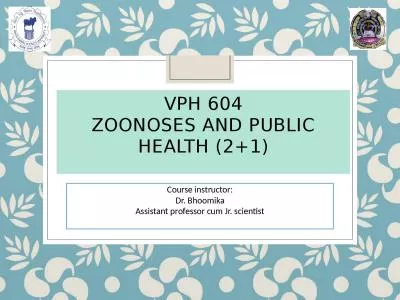PPT-EXOTIC VECTOR-BORNE VIRAL ZOONOSES - A THREAT FOR DISEASES-FREE COUNTRIES?
Author : pasty-toler | Published Date : 2019-02-07
Barbara Bażanów Janusz Pawęska Agnieszka Frącka Wrocław University of Environmental and Life Sciences Department of Pathology Poland National Institute
Presentation Embed Code
Download Presentation
Download Presentation The PPT/PDF document "EXOTIC VECTOR-BORNE VIRAL ZOONOSES - A T..." is the property of its rightful owner. Permission is granted to download and print the materials on this website for personal, non-commercial use only, and to display it on your personal computer provided you do not modify the materials and that you retain all copyright notices contained in the materials. By downloading content from our website, you accept the terms of this agreement.
EXOTIC VECTOR-BORNE VIRAL ZOONOSES - A THREAT FOR DISEASES-FREE COUNTRIES?: Transcript
Download Rules Of Document
"EXOTIC VECTOR-BORNE VIRAL ZOONOSES - A THREAT FOR DISEASES-FREE COUNTRIES?"The content belongs to its owner. You may download and print it for personal use, without modification, and keep all copyright notices. By downloading, you agree to these terms.
Related Documents

